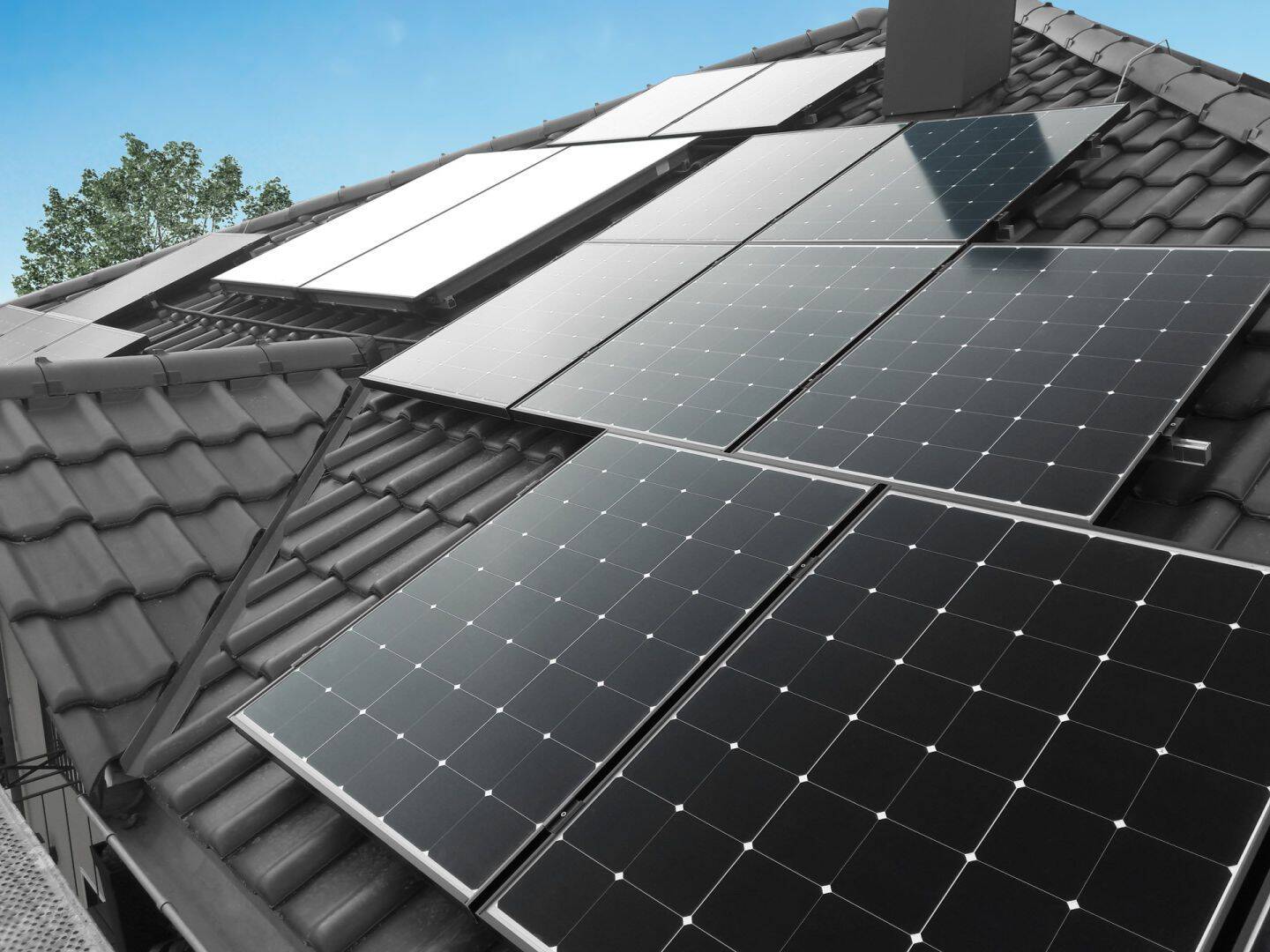How PV elements work In PV elements, the photoelectric effect, a physics phenomenon, is used to generate electricity. This was first described by Heinrich Hartz in 1887. Albert Einstein was awarded the Nobel Prize in 1905 for his detailed description of this effect. In simple terms, it involves materials that, when exposed to light, produce electricity. When some electrons (called photoelectrons) are knocked loose from their atoms due to light, if an electrically conductive material is attached to the plus and minus sides of the photoelectric material, we create an electric circuit and can direct the resulting electrical energy. Bell Labs made the first PV element more than 50 years ago. The first real-world application of PV panels was in the aerospace industry to provide energy for satellites.
 Element, panel, circuit?
Element, panel, circuit?
A typical PV (photovoltaic) element consists of a cover made of glass or plastic, an anti-reflective layer, a top contact plate, a bottom contact plate, and semiconductor layers. When a certain number of PV elements are combined, we get a PV panel, and when PV panels are connected together, we get a PV array. A PV system (installation, array) consists of PV panels (arrays) and a DC/AC converter (inverter). Additionally, systems can be enhanced with either storage or grid connection.
 PV-element efficiency?
PV-element efficiency?
The efficiency of a PV element indicates how much of the incident light radiation is effectively converted into electrical energy. With today's technologies, the efficiency ranges between 16% and 44%. PV panels intended for ordinary household use have an efficiency of 15-20%. When manufacturers measure the efficiency of produced panels, they do so under standardized test conditions (STC), which correspond to a clear summer day with an air temperature of +25°C. Although panel efficiency is an important factor, when making purchasing decisions, the focus is more on the price/power ratio (€/W), as the panel price increases exponentially with efficiency.
Today, the best W/€ ratio is provided by 270-275W polycrystalline panels. EFFICIENCY≠EFFECTIVENESS!!!
The prototype of a Sharp transistor radio powered by solar cells was made in 1961.
- At the latitude of Estonia, on a surface with optimal tilt and azimuth, about 1100 – 1200 kWh/m2 of energy is received annually.
- Approximately 85% of this energy is received between April and October.
- A PV station with a capacity of 1 kW (about 6m2 in size) optimally installed produces between 900 and 1000 kWh of energy annually.
- The optimal installation in Estonia involves a south-facing direction (±15˚) with a tilt angle between 30-45˚.
In 1963, buoys using Sharp photovoltaic modules were installed in Yokohama Bay and the Malacca Strait.
It reduces energy costs
Electricity production occurs locally, allowing savings on grid fees and the possibility to fix electricity prices for years, which is more favorable than purchasing electricity from the grid.
A good investment
Investing in solar panels provides a stable and reliable return. The financial benefit from solar panels consists of three parts:
- Savings on purchased electricity from the grid - by consuming electricity produced by solar panels, you save on purchased electricity from the grid, grid fees, and taxes.
- Selling excess electricity to the grid - any surplus electricity generated can be sold back to the grid at market prices.
- Renewable energy support - for the electricity supplied to the grid, the electricity producer is entitled to receive renewable energy support.
If you produce more electricity than you consume, you can sell the surplus energy back to the grid, and Elering pays a support of 5.37 cents/kWh for it.
For electricity produced by production equipment with an electrical power of less than 50 kW, the producer may receive renewable energy support if: the electricity is generated by December 31, 2020, and the producer has not received state investment support for the establishment of the production equipment. (Effective from January 1, 2019)


